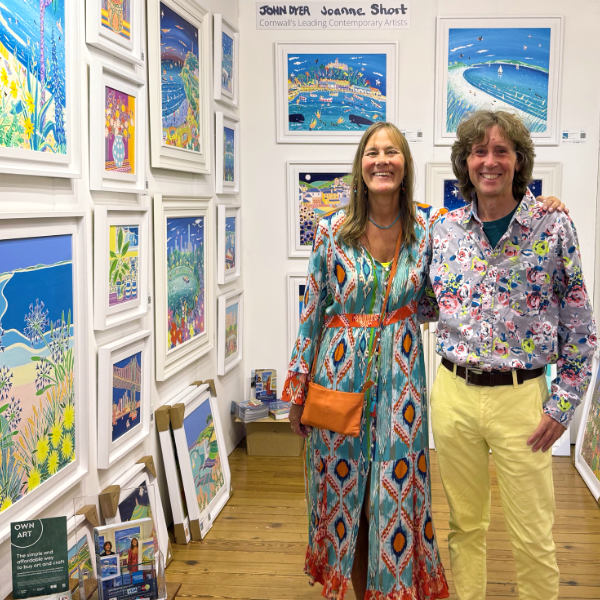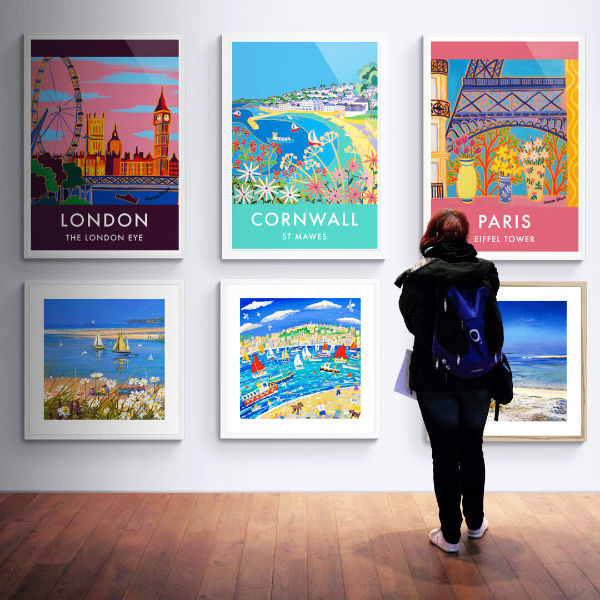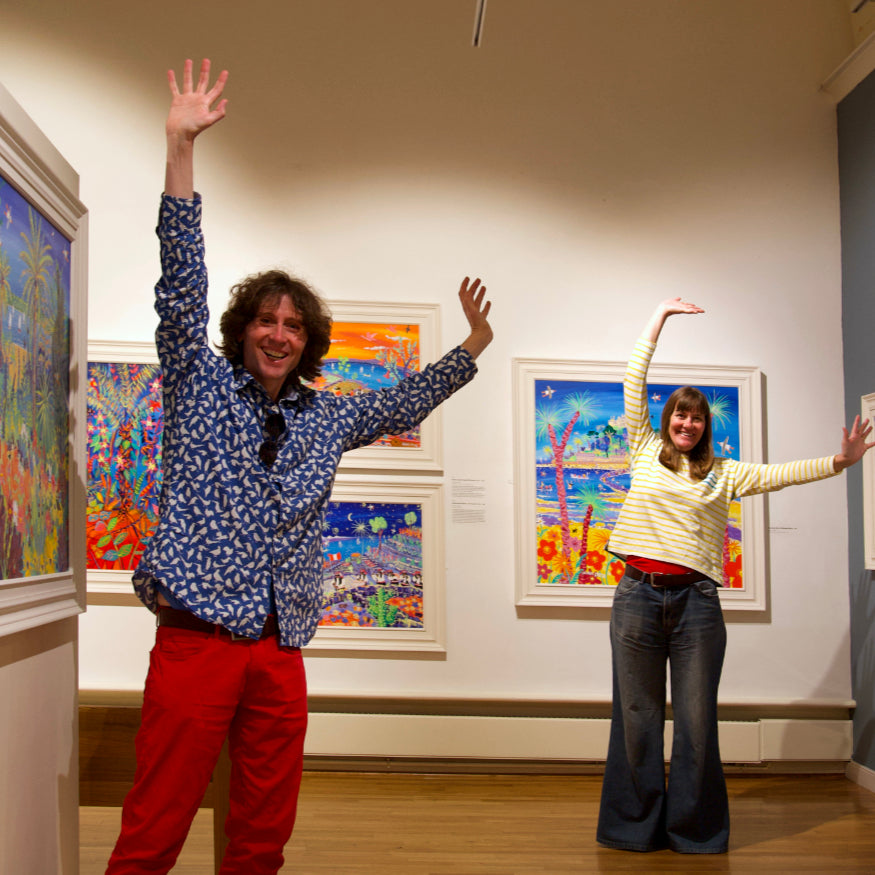Christmas Exhibition Paintings Live 10am Saturday 23rd November & Private View December 6th in St Ives!
Christmas Exhibition Paintings Live 10am Saturday 23rd November & Private View December 6th in St Ives!
Invest in British Art from Cornwall's Leading Artists | Free Worldwide Delivery
JOHN DYER
Original Paintings
New paintings available to buy online now by Cornwall's best loved artist.
JOANNE SHORT
Original Oil Paintings
New paintings available to buy online now by Cornwall's acclaimed colourist painter.
TED DYER
Original Oil Paintings
New paintings available to buy online by Cornwall's best known impressionist artist.
All Original Paintings
View all of the new original paintings that we have available to buy online now in our online gallery.
The ones you missed
View all of the recently sold original paintings by our Cornish artists John Dyer, Ted Dyer and Joanne Short.
Cornwall Art Prints
Museum-quality prints. Framed, Unframed, Signed & Wall Art Posters
Christmas Exhibition St Ives 2024
Private View: 6th December 6pm to 8pm
Exhibition continues: 7th - 8th
Summer Collection 2024
Online exhibition of new paintings by John Dyer & Joanne Short.
Easter Exhibition St Ives 2024
New paintings by John Dyer & Joanne Short in the historic Porthmeor Studios in St Ives.
Explore our Previous Exhibitions
Enjoy exploring our previous exhibitions and discover amazing paintings.
Art Collectors Club.
Enjoy 5% off your first order, regular offers, exclusive exhibition invitations and artist and gallery updates in our monthly email newsletter.
Peter Paul Rubens (1577–1640) is one of the Baroque period's most influential and celebrated artists. Born in Siegen, Germany, Rubens was raised in Antwerp, Belgium, where he would later establish his studio and create many of his most renowned works. His art is distinguished by dynamic compositions, vivid colour palettes, and an exuberant style that brought biblical, mythological, and historical scenes to life.
Rubens received a comprehensive education in the humanities, which profoundly influenced his artistic output. He began his artistic training as an apprentice to Tobias Verhaeght and later to the prominent Antwerp painters Adam van Noort and Otto van Veen. Rubens' early works were marked by a combination of Flemish traditions and the influence of Italian Renaissance masters, whom he studied during his extended travels in Italy from 1600 to 1608.
During his time in Italy, Rubens absorbed the dramatic lighting, rich colours, and dynamic compositions of artists like Caravaggio, Titian, and Michelangelo. He served as a court painter to the Duke of Mantua, Vincenzo I Gonzaga, which allowed him to study classical sculpture and Renaissance art firsthand. These influences are evident in Rubens' mature works, characterized by their powerful expressiveness and robust, sensuous figures.
Upon returning to Antwerp, Rubens established a prolific workshop that produced many artworks, including altarpieces, portraits, landscapes, and tapestries. His ability to blend Northern European detail with Italian grandeur made him popular among European nobility and clergy. Rubens' commissions included works for the Catholic Church, the Spanish Habsburgs, and the French and English courts, cementing his reputation across the continent.
Notable works by Rubens include "The Descent from the Cross," "The Elevation of the Cross," and "The Judgement of Paris," each exemplifying his mastery of composition, movement, and emotional intensity. Rubens also played a diplomatic role, undertaking various missions for the Spanish Habsburgs, further elevating his status and influence.
Rubens' legacy extends beyond his artistic achievements; he significantly influenced the development of Baroque art across Europe. His vibrant style inspired countless artists, including Anthony van Dyck and Jordaens, who were among his most prominent pupils.
Peter Paul Rubens passed away in 1640 in Antwerp, leaving an enduring legacy that continues to captivate and inspire art lovers and scholars worldwide. His work remains a testament to the grandeur and emotional depth of the Baroque era, celebrated for its ability to convey the complexities of human experience with unparalleled vigour and beauty.
Explore our main art collections to find perfect original paintings, limited edition signed prints, open-edition prints, wall art prints and posters & artist designed gifts.
N.B. If you don’t see your confirmation email shortly, please check your spam or junk folder.
A lovely art print bought as a memory of our holidays on the beautiful Isles of Scilly.
The frame is very well made and displays the art print beautifully. Ordering from John Dyer Gallery was simple and delivery swift. I would not hesitate to order from them again.
Thank you so much for the amazing customer service, and most beautiful painting of our favourite place
Absolutely beautiful painting. So thrilled with it. Completely amazing service: beautifully packaged, framed and safely delivered really quickly.
Lovely picture, bought 3 after our recent trip to Cornwall. Already thinking of getting more.
Have walked this coastal path from St Agnes to Chapel Porth and back countless time. I am now pleased that this fabulous print is the first thing I see every morning. Beautiful, happy colours. Nice frame. I’m now planning of ordering one of Mount’s Bay by same artist.
Such a vibrant, pretty piece. I visited Fowey Harbour recently and was looking for a small keepsake to have with me back in the U.S. Shipping abroad was seamless and I received this item quite quickly. I've had many compliments since putting this on my phone and am happy to be reminded of a wonderful trip to a magical place this summer.
As always professional , efficient and prompt .
We have been coming here for 27 years together. This is our place especially during lockdown. John has captured our place beautifully. I have many of John’s prints, always in my birthday, so this one for June is 😍 perfect. They always make me smile, colourful, fun and look perfect in our home
I found the whole experience flowed from start to finish. The customer service was exceptional, they couldn’t do enough for me. This is the kind of first rate service I would expect from such a professional artist. Thank you.
Lovely,bright and colourful ready to hang.
Bought back lovely memories.
Posted promptly too.
Thank you.
I have loved John Dyers work for many years. I have some prints at home and at work.
Gorgeous, vibrant colours. Reminds me of many happy evenings at the Minack when growing up in Cornwall. Special memories.
great service. Thank you.
I purchased “Bathing Belles” to add to 2 other John Dyer original paintings collected over the years .
We decorated our house and removed another trio of prints , so were hoping to find something suitable at John’s latest exhibition.
We were not disappointed . The colours are vivid and the painting has elements of my childhood : a trip on the Enterprise boat , snd swimming in the sea . There is also a signature seagull (oh how I love those seagulls !!) a chough , a puffin and a friendly seal . I like the play on the words in the title, with bluebells in the foreground .
The off white frames complement the colour palette perfectly .
I was extremely impressed on how quickly the painting was delivered after the exhibition - I had expected to wait at least a couple of weeks , but within days it was with me . As always it was packaged very carefully .
Stripy Swimmers is a joyous riot of exquisite colours and shapes. It has pride of place in my sitting room. Every day it lifts my spirits and energizes me to be creative myself. Thank you Joanne, your unique painting has a very happy home. Thanks also to you John for your expert eye - the frame perfectly enhances the explosion of colour. It was so robustly packaged I wouldn't hesitate to buy from the gallery again knowing that it will arrive safely. I am a very Happy Customer!
We have loved and been visiting Holywell bay for over 25 years. It's a real home from home for us. This picture captures the place for us perfectly.
The paper is such good quality, certainly worth the cost. Delivery was effortless.
WOW Environmental inspired art at it's best.Bright and bold and mesmerising. John Dyer was very easy to contact and accommodating with dates for shipping




